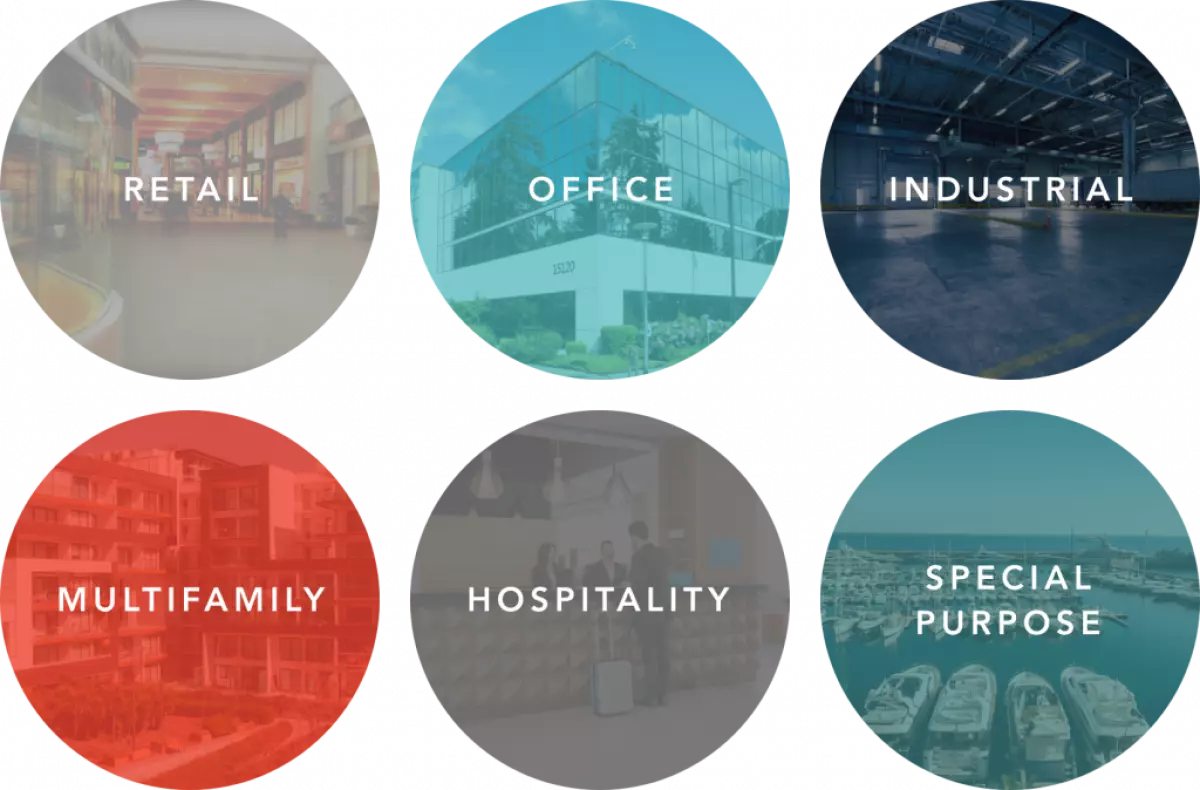Commercial real estate (CRE) is a vast and diverse asset class that encompasses properties specifically designed for business use. From retail and office spaces to industrial, multifamily, hospitality, and special purpose properties, CRE offers a wide range of investment opportunities. In this article, we'll explore the various types of CRE assets to help you evaluate future investment prospects.
Retail
Retail properties come in various forms, including standalone buildings, single-tenant units, and large-scale shopping centers. Demand for retail spaces is driven by consumer spending habits and trends in specific geographical areas. Retail properties can be categorized into five subcategories:
- Malls: These range in size and typically feature major department store anchors, as well as inline retail, services, and restaurants.
- Community & Neighborhood Centers: These centers house a mix of general merchandise or convenience-oriented tenants and are often anchored by big-box retailers or grocery stores.
- Strip Centers: Strip centers focus on convenience tenants such as dry cleaners, nail salons, and fast-food options.
- Power Centers: Dominated by "big box" retailers, power centers have very few smaller tenants.
- Lifestyle Centers: These open-air retail strip centers have become popular and feature upscale apparel and restaurant options.
 Image: Various types of retail properties
Image: Various types of retail properties
Office
Office buildings come in different shapes and sizes and are categorized based on height, location, and use. The height categories include low-rise (less than 7 stories), mid-rise (7-25 stories), and high-rise (25+ stories). Location-wise, offices can be classified as urban or suburban. Urban offices are typically high-rise buildings located within cities, while suburban offices are situated in less densely populated areas, often low or mid-rise structures. The final classification is based on use, with demand varying depending on the region's dominant industries. For example, regions with a concentration of finance and insurance businesses experience increased demand for general office spaces, while specialized requirements exist for medical offices or flex spaces that combine industrial or technology purposes with general office space.

Industrial
Industrial spaces provide practical and efficient solutions for businesses focused on manufacturing, storage, distribution, or research and development. Demand for industrial spaces is closely tied to economic activity and consumer spending. The industrial sector can be divided into three categories:
- Manufacturing: These facilities are used for assembly, conversion, or fabrication of raw materials into finished products. They can be classified as heavy or light industrial.
- Storage & Warehouse: Warehouse spaces primarily serve the purpose of storing or distributing goods and materials. Specialty facilities like cold storage and retail storage also fall under this category.
- Flex / R&D: These industrial buildings offer flexibility for various uses, such as testing or research.

Multifamily
Multifamily assets represent one of the largest sectors in commercial real estate. With the increasing number of renters in the US, apartment property offerings continue to expand. Multifamily properties are residential buildings that house multiple families or groups within a single building or complex. This asset class includes condominiums, townhomes, co-ops, apartment complexes, and student housing near major colleges or universities. Subclassifications within multifamily properties include:
- Low-rise / Garden Style: These 2 to 4-story buildings are situated in suburban, rural, or urban areas with a garden-like setting.
- Walk-up: 4 to 6-story buildings without elevators.
- Mid-rise: Typically 5 to 9 stories tall, these buildings have elevators and are usually located in urban areas.
- High-rise: 10+ story buildings with one or more elevators.
- Special purpose: Dedicated housing for select population segments, such as senior, student, and subsidized housing.

Hospitality
The hospitality sector primarily revolves around hotels, which differentiate themselves based on amenities and high-quality guest services. Flagship hotel brands benefit from global tourism by maintaining consistent service across their locations. Hospitality assets can be categorized as:
- Full Service: These high-end hotels provide top-quality guest services and amenities, allowing them to command premium prices.
- Limited Service: Properties that offer slightly fewer amenities than full-service hotels but still provide essential services.
- Budget: Budget hotels offer minimal services to provide the best possible prices.

Special Purpose
In addition to the categories mentioned above, some CRE assets have unique uses that make them difficult to place within a specific category. These properties may have specific layouts, renovations, or purposes that limit their use for only their intended function. Examples of special-purpose CRE properties include marinas, sports arenas, funeral homes, stadiums, and service centers.
By understanding the various types of commercial real estate assets, you can make informed investment decisions that align with your goals and objectives. Remember to consider economic trends and the specific requirements of different asset classes to create a well-diversified portfolio. Happy investing!

















